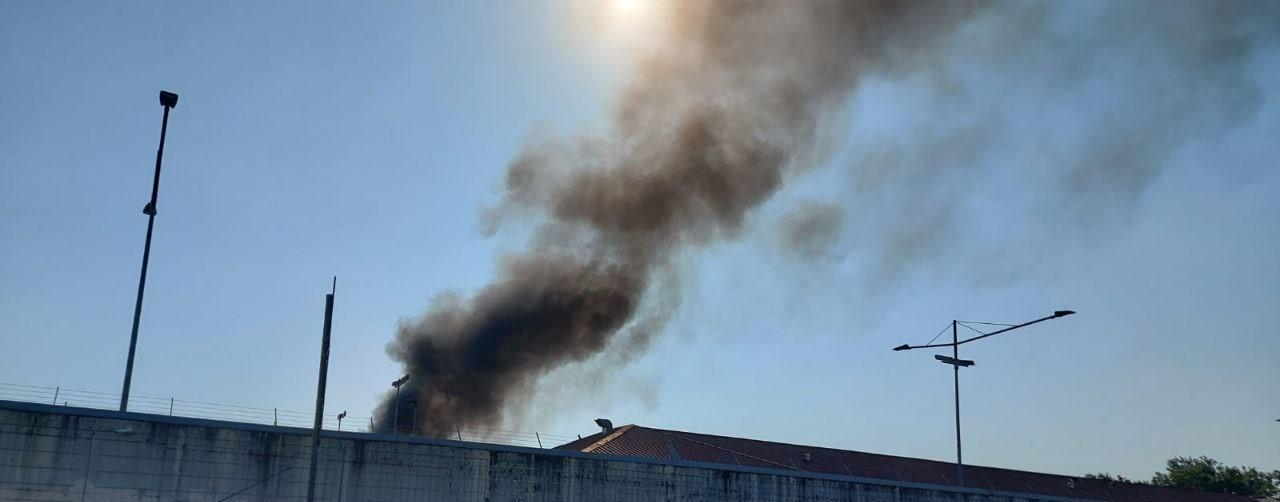
After the last uprising, which at the end of May had destroyed the blue area of the CPR of Gradisca, on July 10 it was the same area that burned again: several dormitories were destroyed again and some prisoners managed to reach the roof.
The riots continue to follow one another unabated – the last one in the so-called “green area” on the evening of August 4 – increasingly undermining the structure of the Gorizia administrative prison and even forcing the cops’ unions to ask for its temporary closure, naturally to allow it to be restored.
In the meantime, following the greetings brought under the walls of the CPR in recent months, 10 expulsion orders have currently been served from Gradisca (ranging from 6 months up to 2 years), motivated by dozens of complaints received only later against as many supporters.
While continuous riots are making many of the CPRs of the peninsula increasingly unusable, thus affecting the system of expulsions whose blackmail function they constitute the physical emblem, the upcoming “security package” – which could be approved by the end of the year – introduces new crimes and aggravates others in an attempt to put a stop to a situation that is increasingly less manageable also for the stability of the selection-exploitation-blackmail-imprisonment-expulsion.
This is the case of the sentence of imprisonment from 1 to 6 years for each prisoner who, within a CPR or other so-called reception facility, “through acts of violence or threats or through acts of resistance, even passive, to the execution of orders given by the authorities, carried out by three or more people together, promotes, organizes, directs a revolt”. For the mere fact of participating in the revolt, the penalty ranges from 1 to 4 years, while there is also an aggravation of the penalty if the act is committed with the use of weapons or if someone is killed or suffers serious or very serious injuries in the revolt.
It is evident that for the legislator it is completely indifferent from which side the action capable of causing injury or leading to death comes and, consequently, who the victim is.
Since it is usually the cops who beat and kill the prisoners in prisons and “administrative” detention camps – unfortunately the opposite does not often happen – during but also in the absence of riots, it is easy to imagine what kind of free hand this law can guarantee to future actions of repression of riots and to the completely summary violence inside the camps by the guards.
Since the practicability of those who act covered by a uniform must become increasingly total (inside prisons and CPRs as well as outside), the aforementioned aggravating circumstance also exists in the hypothesis that the killing or injury occurs “immediately after the revolt and as a consequence of it”. In fact, prisoners often die as a result of beatings or escape attempts – just to stay in Gradisca, think of Majid El Kodra or Vakhtang Enukidze – not to mention the punitive expeditions often conducted in the days following the riots.
In short, the clear message seems to be “even if you risk killing them, don’t think twice, as the fault will always be of those who remain”.
The inclusion among the ordinary practices of managing CPRs of lethal methods of containing riots and protests constitutes, in fact, a huge legal-repressive leap forward, such as to go even far beyond what is provided for in ordinary prison regimes, except for situations that risk becoming irrecoverable, such as when in 2020 and not for the first time, the State did not hesitate to shoot at the prisoners in the prisons in revolt.
The logic of war, to eliminate at the root, when deemed necessary, any form of insubordination to the deprivation of freedom, in the broader framework of the systemic war waged against marginal, irregular, rebels, irreducible to the imposed order.
While trying to break the bonds of solidarity between inside and outside, the intent therefore appears clear: to restore order and further strengthen the machinery of detention and expulsion.
In the meantime, the list of sites designated to host the new deportation camps planned in each region is expected to be announced by the end of the summer.
Finally, a new tender for the management of the Gradisca CPR was opened a few days ago after the previous one, dating back to 2022, ran aground due to the judicial flaws of various participating coops without reaching a conclusion, thus remaining for the moment the usual Ekene to manage the field. The new tender provides for a capacity of 150 seats, for an estimated contract amount of about 17 and a half million euros.
For information, the coops in the running for the assignment in the previous tender were, in May of this year: Officine Sociali of Priolo Gargallo (SR), Martinina srl of Pontecagnano Faiano (SA), Azzurra srl of Varese with administrative headquarters in Omegna (VB), Associazione San Marco Onlus of Palma di Montechiaro (AG), La mano di Francesco onlus of Favara (AG), Coop Stella of Roasio (VC) and again Ekene of Battaglia Terme (PD).
Solidarity with the rioters in prisons and in the CPR
FIRE TO ALL THE PRISONS
FREE THEM ALL
Comrades
From: https://nofrontierefvg.noblogs.org/post/2024/08/10/ancora-da-gradisca/